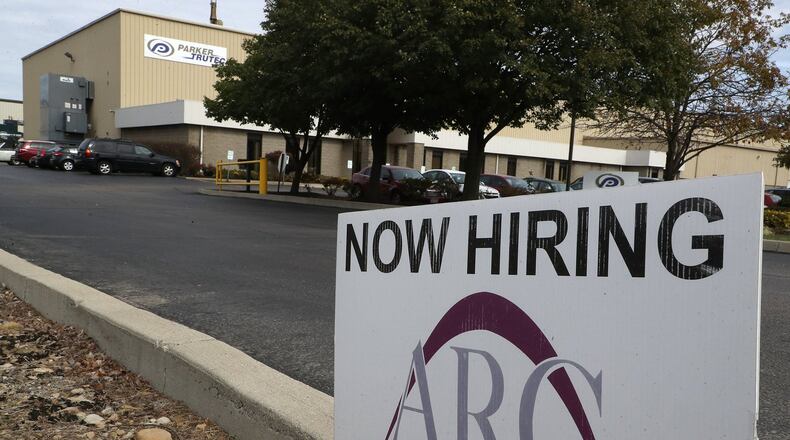And Ohio’s economy is growing quickly, adding jobs faster than the rest of the nation, said Bret Crow, spokesperson for Ohio Job and Family Services. Average weekly earnings are also growing faster than other states across the country.
“This milestone is a big deal for Ohio, but even further, it’s a positive indicator that Ohio’s economy is continuing its strong trajectory upward,” Crow said.
» PHOTOS: Luxury Oakwood home renovated in 2003 on market
Experts say the data underline the continued recovery after the Great Recession. Even as the economy improved, consumers worried about spending their savings.
“Finally consumer confidence has increased and they feel more confident spending money on new cars, housing and other consumer products,” said John Bowblis, an economics professor at Miami University’s Farmer School of Business. “And this has made business confidence increase as well, leading them to invest in their businesses and to hire workers to meet the demands of consumers.”
The manufacturing sector added 3,400 jobs last month. Staub Manufacturing Solutions in Harrison Twp., for example, has increased from 23 employees to 40 in the past year and a half, said owner Steve Staub.
“It started moving up a year and a half ago, but once the tax cuts went into effect, it really gave optimism to manufacturers,” he said, adding that the tax cuts are like “jet fuel” for manufacturers.
»RELATED: Local Kroger undergoing $1.75 million renovation to add grocery pickup
More than one in 10 Ohioans work a manufacturing job, totaling more than 700,000, according to the Ohio Manufacturers’ Association. The sector boasts an Ohio GDP of $106 billion, ranking third of the 50 states. It’s also the largest of 20 economic sectors in the state.
The “other services” sector, which includes repair shops, hair and nail salons, and weight-reduction services, added 3,400 jobs in September as well, a sector that Crow said does better when people have more disposable income to spend.
“I think what we need to be careful of is what happens to the Federal Reserve policy with interest rates. When you raise interest rates, it makes borrowing more expensive,” Bowblis said. “If the fed over-tightens that could lead to a slowdown in growth and potentially recession. It’s a delicate balancing act.”
»RELATED: Local Kroger undergoing $1.75 million renovation to add grocery pickup
As more people lose the option to borrow, their consumer confidence could drop, adding on to the growing concern consumers have as the trade war with China escalates.
And labor force participation has dropped, said Miami University economics professor Michael Lipsitz. Participation takes into account all Ohioans older than 16 who are working or want to work. Before the recession, it was about 67 percent, but now it is closer to 62 percent.
“Another month of falling labor force participation means Ohioans are leaving the labor market — either to move to another state or they are unable to find a job that fits their skills,” said Andrew Kidd an economist with The Buckeye Institute’s Economic Research Center.
FIVE FAST READS
• Local mall announces new store coming two days in a row
• New store to open at Beavercreek mall
• Amazon boosts wages for area Whole Foods, Amazon workers
• New store opening in former Fairborn Kroger space
• New Centerville arts, crafts store announces opening date, giveaways
About the Author
